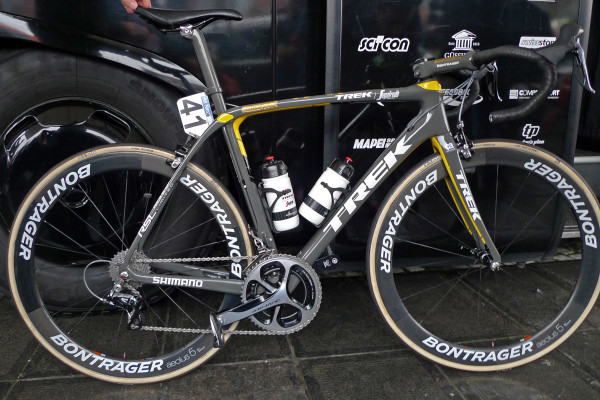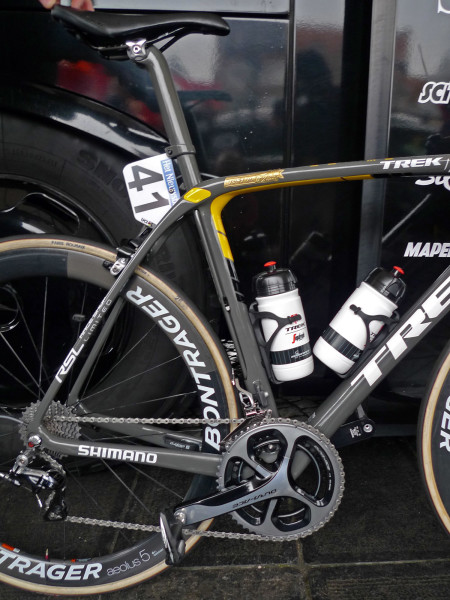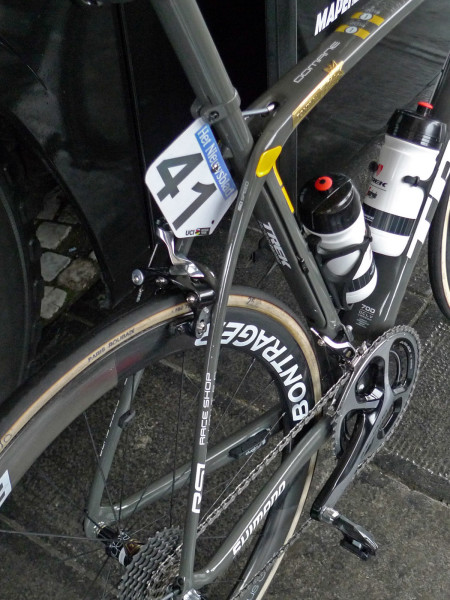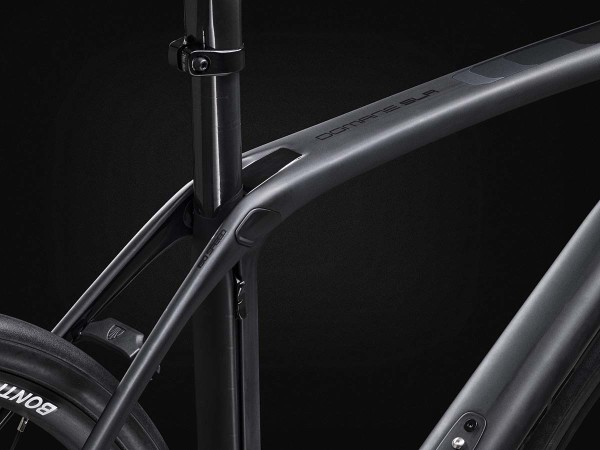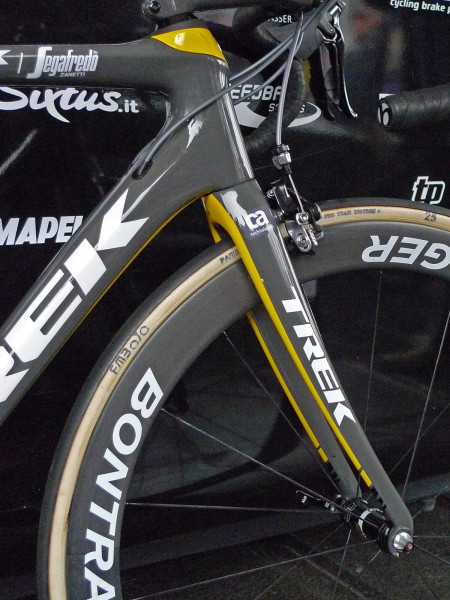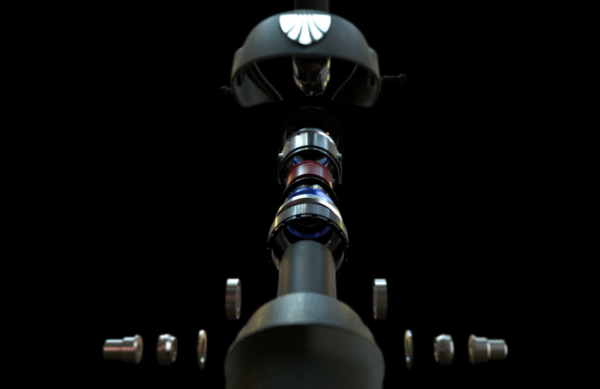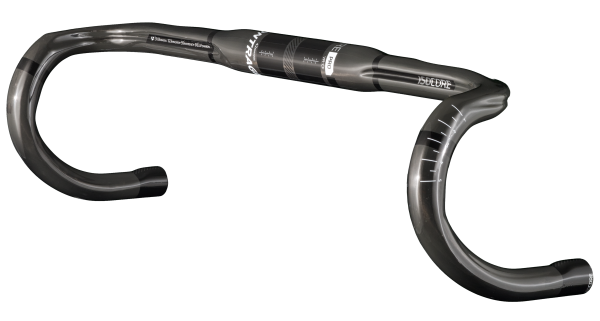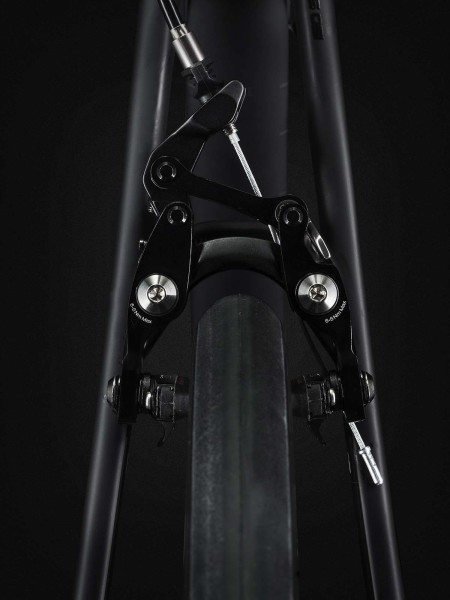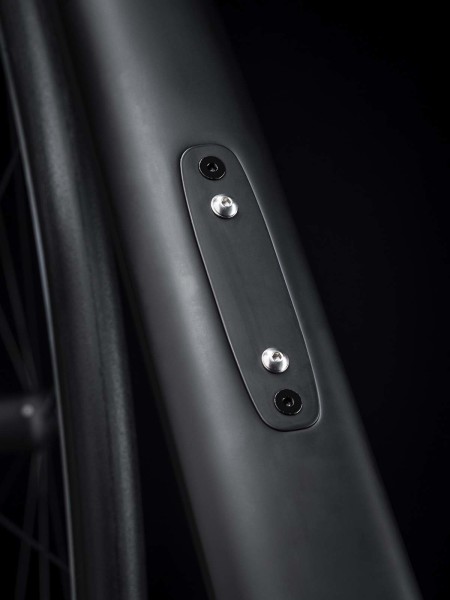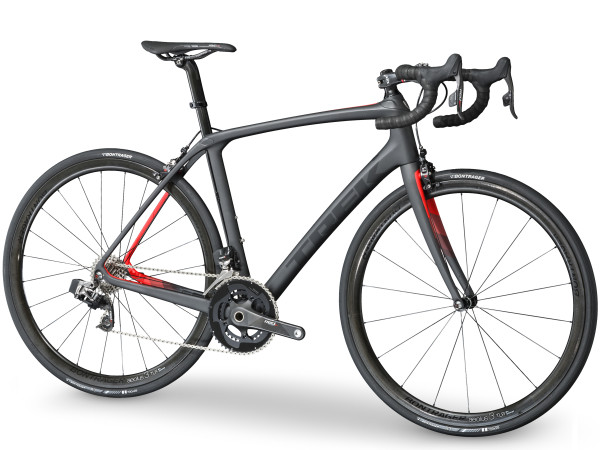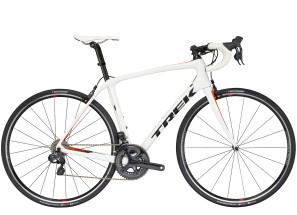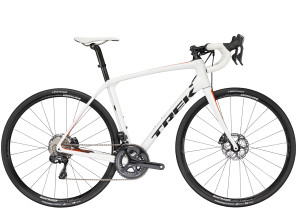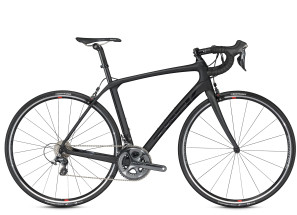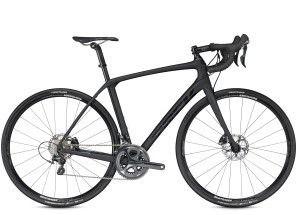Cancellara’s new ride
Typically, road bike efficiency and bicycle suspension don’t go hand in hand. But in 2012 when Trek introduced the Domane, it could be argued that it represented a revolution in road bike design. Rather than incorporating “suspension” in a traditional sense, the Domane saw the launch of Trek’s IsoSpeed Decoupler which allowed certain parts of the frame to flex while others remained stiff. Shortly after, Cancellara put his stamp of approval on the concept by racing it to victory in both Flanders and Roubaix.
As good as the Domane was, Trek thought it could be better. Many felt that the front of the bike’s ride didn’t quite match up with the rear on account of the ride taming nature of the IsoSpeed decoupler. There was also the issue of different riders wanting different levels of vibration damping based on their weight or riding styles. All valid claims, all which seem to be addressed on the all new Domane…
Somewhere back in 2014, Trek started down the path of creating a new version of the Domane to address the concerns with the current frame. In addition to spending time prototyping and testing on the actual cobbles in Belgium, Trek even built a 100m segment of cobbles of their own at home in Waterloo. Throughout testing Trek claims to have gone through 33 unique ideas, including 3 frame, 2 fork, and 2 handlebar concepts to get to the final product.
While the new Domane continues with their IsoSpeed Decoupler on the back of the bike, it has evolved to include adjustability. This should allow different riders to find their ideal setting by moving the slider which is built into the seat tube. The system functions by combining two “seat tubes” that are connected at the top tube junction with the IsoSpeed decoupler and also towards the lower water bottle mounting bolt on the seat tube via a bolted joint. The main frame seat tube in front is split from the lower seat mast portion of the frame by a vacant space or a gap between the two. Between those two pieces of carbon on the frame is a slider that can be positioned up or down. At the lowest position the frame will have the most compliance, or around 14% more than the original Domane. At the highest position, the slider limits the movement between the two frame pieces and provides the least compliance. At the high position, the new frame will be less compliant than the original with just over 1mm less average deflection.
Perhaps more important than adjustability on the rear was the need to balance out the ride feel of the front of the bike. That meant an all new version of the IsoSpeed Decoupler in the front. It isn’t exactly clear how the system works, but it appears that the upper section of the steerer tube rides in a headset that is captured its own decoupler. This should allow the upper section of the steerer tube (along with the bars and stem) to flex a tiny amount and reduce the input to the rider. Seeing how there is no IsoSpeed shroud on the lower portion of the head tube it stands to reason that the lower headset cup/steerer does not flex, which means the only portion of the bike affected would be at the upper headset cup and above. Trek has long touted the benefits of their E2 asymmetric steerer which claims to allow the steerer to flex fore and aft while remaining laterally rigid, so perhaps this is taking that concept to the extreme. Trek Claims this provides around a 10% improvement over the current Domane.
In order to lessen the impact to the rider even more, Bontrager has stepped up with their new IsoCore handlebar. Along with the use of IsoZone padding, the bar utilizes a vibration deadening rubber that is layered in between carbon plies in key spots to cut down on road buzz – somewhere in the neighborhood of 20%.
Together, the IsoCore bar and front IsoSpeed Decoupler should provide a more balanced ride, especially when compared to the new adjustable IsoSpeed rear.
Other frame improvements include the Domane Control Center which will hide a Di2 battery, as well as increased tire clearance, and the choice of direct mount rim or flat mount disc brakes. Rim brake frames will allow up to 28mm tires with QR wheels, while disc brake frames will allow for 32mm tires on wheels held in place with 12mm thru axles. Both bikes offer hidden fender mounts.
Offered in the Domane SLR 6 and SLR 7, both of which have disc and rim brake options with pricing ranging from $4,999 to $6,499. The top level SLR 9 will only be offered in a rim brake SRAM eTap build for $10,999, and both rim and disc OCLV carbon framesets will sell for $2,999.
Claimed weights are listed as (lb/kg):
- Domane SLR 9 eTap 14.14/6.76
- Domane SLR 7 16.08/7.49
- Domane SLR 7 Disc 18.05/8.3
- Domane SLR 6 16.07/7.46
- Domane SLR 6 Disc 18.05/8.3
